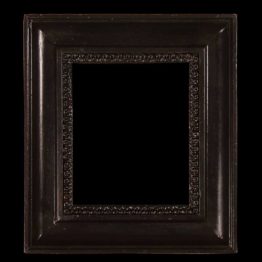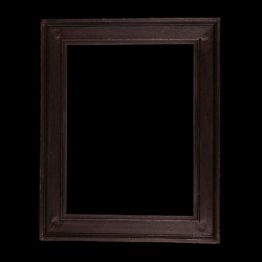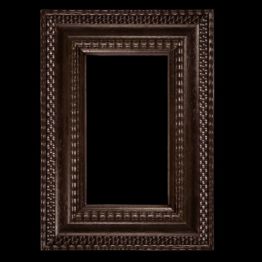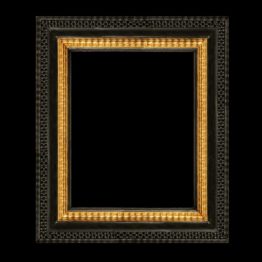Flemish Picture Frames
Find here reproductions of Flemish Picture Frames for sale. When we talk about Flemish frames we mean models coming from the Netherlands. Therefore, the category includes antique Dutch frames as well. In other words, we call them in both ways, as the two labels refer to the same models. We realize Flemish picture frames for paintings in custom size. Also, you can personalize the finishes as you prefer.
The 17th century Dutch frames are quite common. Collectors look for them eagerly because of the importance of Baroque Dutch painters. They have a very typical structure and quite similar finishes. Indeed, there isn’t much of a difference among antique Dutch picture frames. We display above a few models covering one century of history. In fact, between the 17th and 18th century, Flemish craftsmen created their best samples.
Dutch black picture frame
The most known models of antique Dutch frames are the black ones. Flemish did not make great use of gold. In fact, the majority of Flemish picture frames don’t have gold at all. On the other hand, France and Italy made abundant use of the gold leaf. The ateliers of master gilders were flourishing in South Europe during Baroque and Rococo times and spread their mastery into Northern countries later on.
The proximity between the Netherlands and France has later transmitted the art of gilding to Dutch frames. A second reason that influenced the use of gold in later times can be the Grand Tour. Artists visited France and Italy with special care for Florence and Rome, to get deep into classic traditions. So, the painters who went to Italy to see the masterpieces of the Renaissance were many.
For instance, Rubens enriched his painting skills by getting in touch with Roman arts. In short, we can split antique Dutch picture frames into two main categories. We put in the first category the Dutch black picture frames. They don’t have gold at all and belong mainly to the early 17th century. The second group includes all the Flemish frames manufactured with a few gilded ornates.
17th century dutch frames
17th century Dutch picture frames have mostly a higher profile near the painting. The external edge, instead, tends to be lower. If you would be able to cut the profile, you would see a section similar to the reverse Venetian models.
Black Flemish decorations, with ripple moulded to the sight and the external edge, are unique. They did not spread over Europe as other types of decorations though. For this reason, they became a distinctive trait. See our cod. 102 to have an idea of what ornamentations we’re referring to. You won’t find them in other style frames.
Even the structure of the Dutch black picture frame is typical. Apart from the one displayed above, it exists another very common model. It’s a reverse ebonized profile with extended corners. Check out this link to Pinterest to see it: Dutch black model.
18th century dutch picture frames
18th century Dutch picture frames slightly differ from the models of the 1600s. In fact, more often than before they have little portions of gold leaf on certain decorations. See our cod. 104 to have a better picture of what we’re meaning.
Ebonized reverse profiles with extended corners keep existing as previously. However, they become richer and richer with gilded ornates while the 19th century takes over pushing the magnificence of Rocaille art all over Europe.



